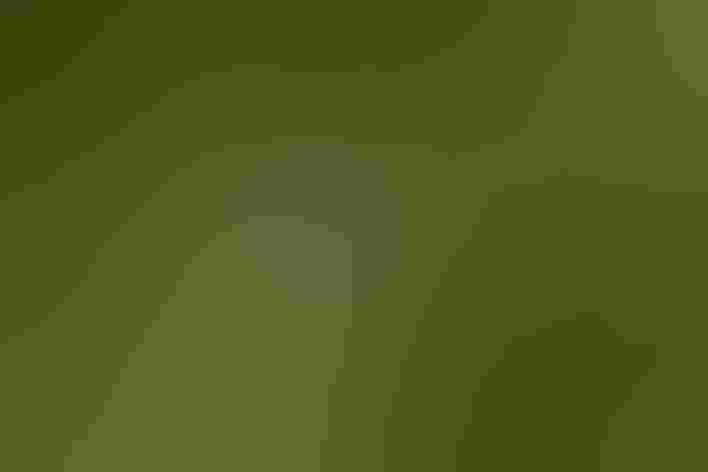Golden-winged Warbler
At a Glance
A strikingly patterned warbler of leafy second growth and swamp edges. Once common in the northeast, it has been declining recently in southern parts of its breeding range. As it disappears, its close relative the Blue-winged Warbler has been advancing north. The Blue-wing may be driving the Golden-wing out of the best habitats, but the situation is not well understood. The two species interbreed, creating distinctive hybrid types known as 'Brewster's' and 'Lawrence's' warblers.
All bird guide text and rangemaps adapted from by Kenn Kaufman漏 1996, used by permission of Houghton Mifflin Harcourt Publishing Company. All rights reserved.
Category
Perching Birds, Wood Warblers
IUCN Status
Near Threatened
Habitat
Forests and Woodlands, Freshwater Wetlands, Shrublands, Savannas, and Thickets
Region
California, Eastern Canada, Florida, Great Lakes, Mid Atlantic, New England, Plains, Rocky Mountains, Southeast, Texas, Western Canada
Behavior
Direct Flight, Flitter, Rapid Wingbeats
Population
390.000
Range & Identification
Migration & Range Maps
Migrants are seen most commonly in late April and May, and during September. Probably migrates mostly at night.
Description
4 1/2" (11 cm). Gray above, white below, with broad yellow wing-bars, yellow forehead. Throat patch and narrow mask are black on males, gray on females. Often interbreeds with Blue-winged Warbler, producing distinct hybrid types.
Size
About the size of a Sparrow
Color
Black, Gray, White, Yellow
Wing Shape
Rounded
Tail Shape
Notched, Square-tipped
Songs and Calls
Slow, drawled, insect-like song resembling that of Blue-winged but longer, seee-bzzz, bzzz, with first note higher.
Call Pattern
Falling, Flat
Call Type
Buzz, Chirp/Chip, Hi, Trill
Habitat
Open woodlands, brushy clearings, undergrowth. Breeds in brushy areas with patches of weeds, shrubs, and scattered trees (such as alder or pine). This habitat type is found in places where a cleared field is growing up to woods again, as well as in marshes and tamarack bogs. In winter, in the tropics, lives in forest edges and open woodland.
Sign up for 爆料公社's newsletter to learn more about birds like the Golden-winged Warbler
Behavior
Eggs
5, sometimes 4-7. Pale cream or pink with streaks and blotches of brown and lilac. Incubation by female, 10-11 days. Up to 30% of nests have cowbird eggs. Hatching of warbler eggs is low when cowbirds present, but cowbird nestlings do not necessarily fare better than the warbler nestlings.
Young
Leave nest after 8-9 days, are fed by parents for up to another month. Parents may divide fledglings into two groups, each parent attending only part of brood. 1 brood per year.
Feeding Behavior
Forages mostly in the upper level of trees and shrubs in summer. Feeds by probing and picking among foliage, sometimes hanging head downward. Probes in curled leaves and pries them open in search of insects. May forage with Black-capped Chickadees on breeding territories and in migration. On wintering ground, mainly feeds fairly low in trees, in mixed flocks with other species.
Diet
Mostly insects. Diet is not known in detail, but feeds on many caterpillars and adult moths, especially Tortricid moths, also other insects and spiders.
Nesting
Hybridizes with Blue-winged Warbler. Male arrives on territory in May, a few days before the females. Male defends territory by singing; in aggressive encounters, he postures with raised crown feathers and spread tail, and he may chase and fight with other males. Males have two song types, one used to advertise territory and one mostly for attracting a mate. Courtship includes male chasing female, raising his crown feathers, slow wing beats as male flies away, and gliding flight as male flies toward female. Nest: Built by female on the ground at base of shrub or in a tussock of grass or sedge, usually hidden by foliage. Open cup nest constructed of leaves, grapevine bark, and long strips of grass; lined with fine plant material.
Conservation
Conservation Status
Increased and expanded range in late 1800s, probably as clearing of forest created more of the second-growth habitat favored by this species. Now declining seriously in southern part of breeding range. Competition and interbreeding with Blue-winged Warbler probably part of cause, also parasitism by cowbirds.
Climate Threats Facing the Golden-winged Warbler
Choose a temperature scenario below to see which threats will affect this species as warming increases. The same climate change-driven threats that put birds at risk will affect other wildlife and people, too.








